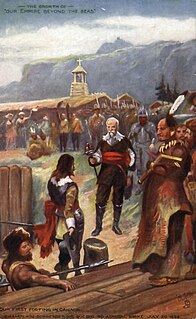 W
WThe Siege of Alès was undertaken by Louis XIII of France, and the city captured on 17 June 1629.
 W
WThe Siege of Batavia was a military campaign led by Sultan Agung of Mataram to capture the Dutch port-settlement of Batavia in Java. The first attempt was launched in 1628, and the second in 1629; both were unsuccessful. Jan Pieterszoon Coen, the Governor-General of the Dutch East Indies, managed to repel the sieges and beat off all of Sultan Agung's attacks.
 W
WThe Battle of Górzno was a battle fought during the ending phase of the Polish–Swedish War (1626–1629), between Sweden and the Polish–Lithuanian Commonwealth on 12 February 1629. The Swedes were commanded by Herman Wrangel, and the Poles by Stanisław Rewera Potocki. The battle ended with a victory for Sweden, who forced the entrenched Polish army out of their positions and retreat.
 W
WThe Battle of St. Kitts or St. Cristopher was a successful Spanish expedition that seized the islands of Saint Kitts and Nevis from the English and French during the Anglo-Spanish War (1625–30).
 W
WThe Siege of 's-Hertogenbosch also known as the Siege of Bois-Le-Duc was an action in 1629, during the Eighty Years' War and the Anglo–Spanish War in which a Dutch and English army captured the city of 's-Hertogenbosch. The city had been loyal to the King of Spain since 1579 and was part of the Spanish Netherlands.
 W
WThe Siege of Privas was undertaken by Louis XIII of France from 14 May 1629, and the city of Privas was captured on 28 May 1629. It was one of the last events of the Huguenot rebellions (1621-1629).
 W
WThe Surrender of Montauban occurred on 21 August 1629, when the Huguenot city of Montauban surrendered to the Catholic troops of the French king Louis XIII under the direction of Richelieu.
 W
WThe surrender of Quebec in 1629 was the taking of Quebec City, during the Anglo-French War (1627–1629). It was achieved without battle by English privateers led by David Kirke, who had intercepted the town's supplies.
 W
WThe Battle of Trzciana took place on 25 June 1629 and was one of the battles of the Polish-Swedish War (1626–1629) or Second Swedish-Polish War. The Polish forces were led by Crown Field Hetman Stanisław Koniecpolski and imperial troops under Hans Georg von Arnim-Boitzenburg, sent by emperor Ferdinand II to aid Sigismund III, met with troops commanded by Swedish King Gustav II Adolf, who supported the Protestant Lutherans of Germany and northern Europe. Gustav Adolf was almost killed or captured twice. Fighting in Prussia continued after the battle into July and August and ended with stalemate and finally a truce accepted by Sigismund III.